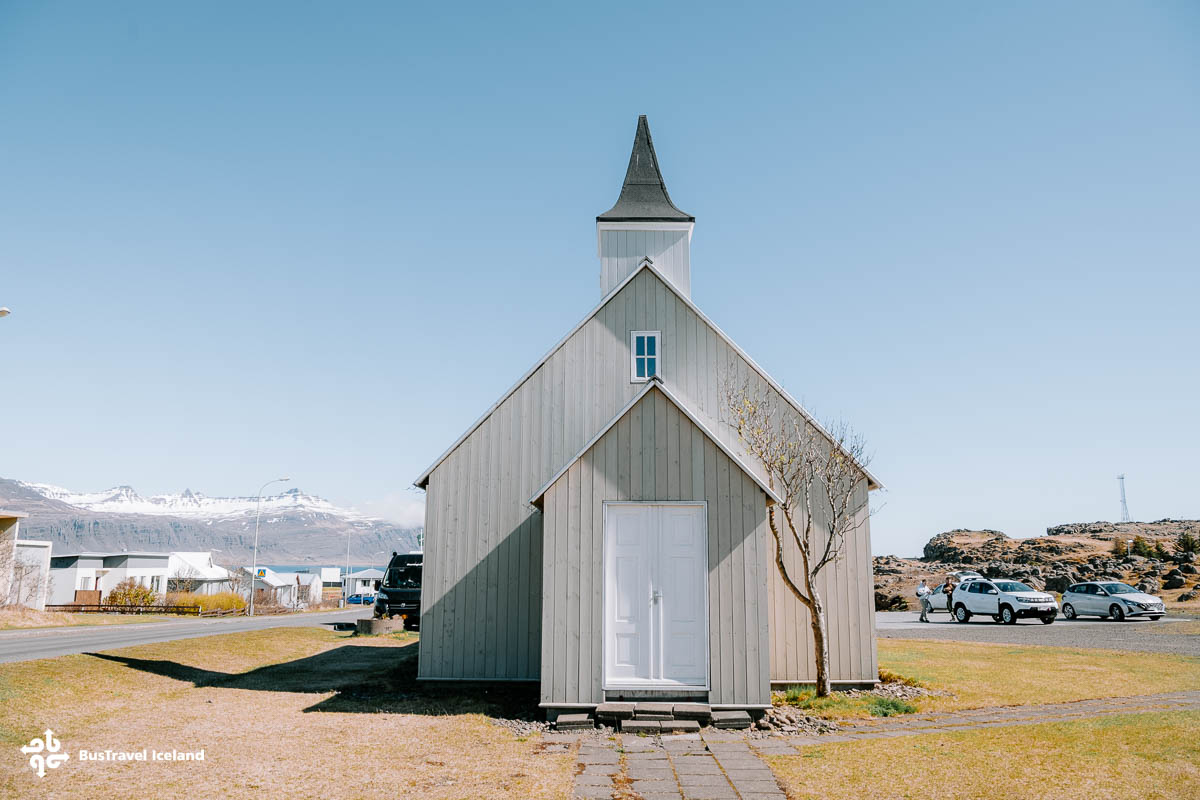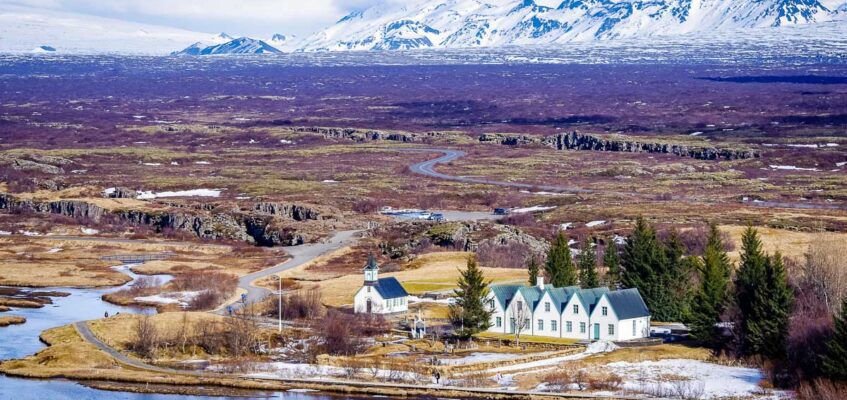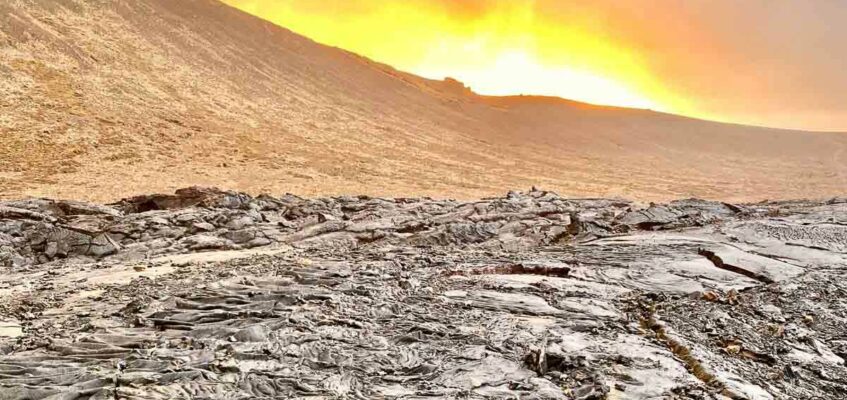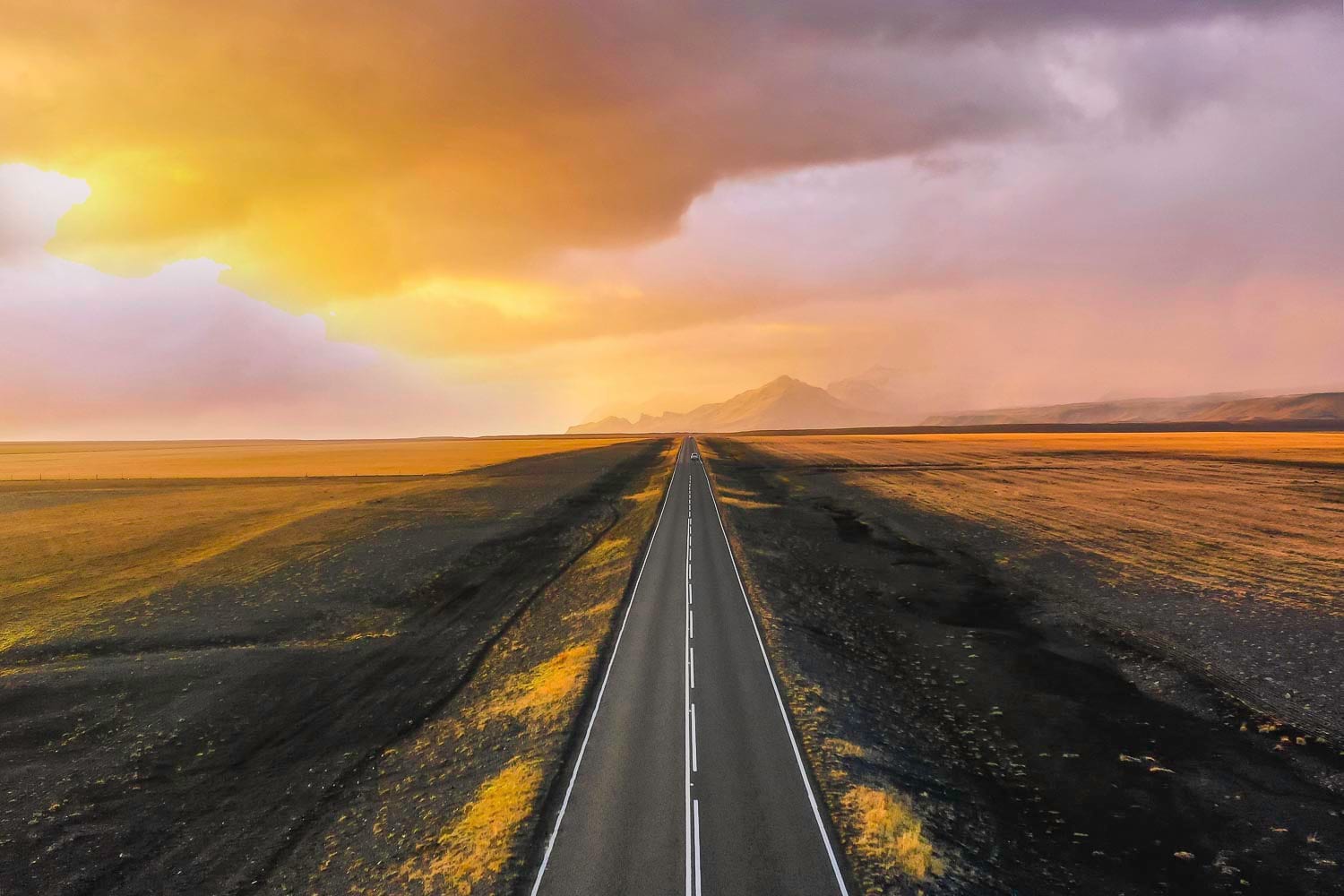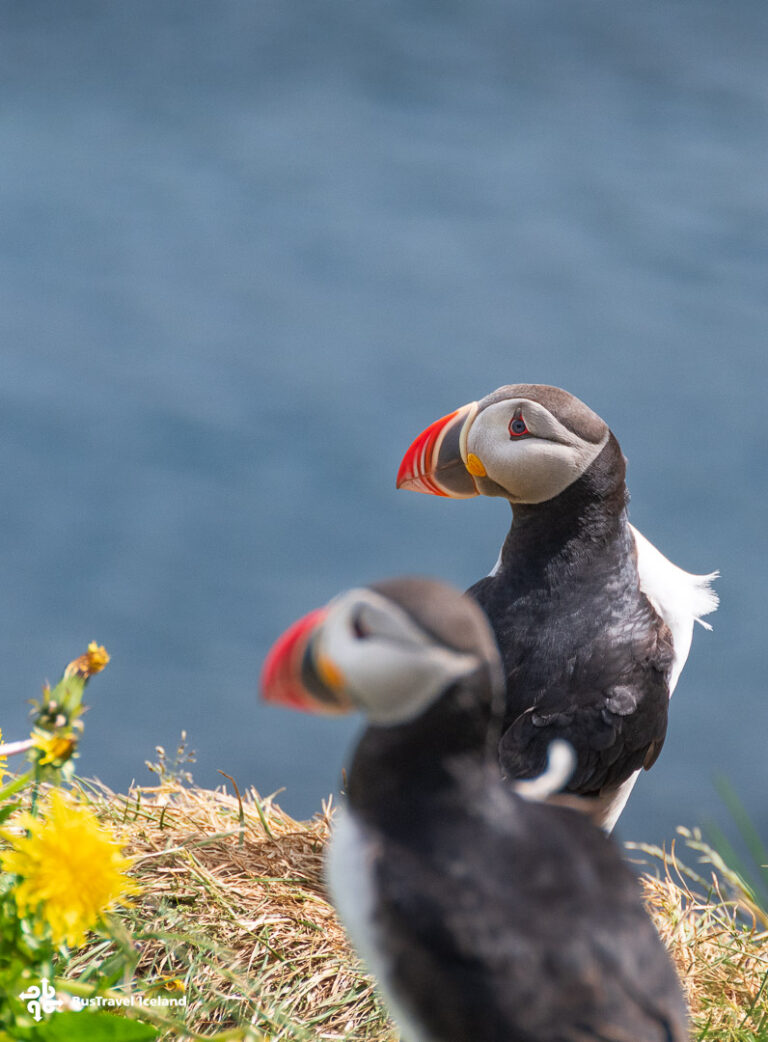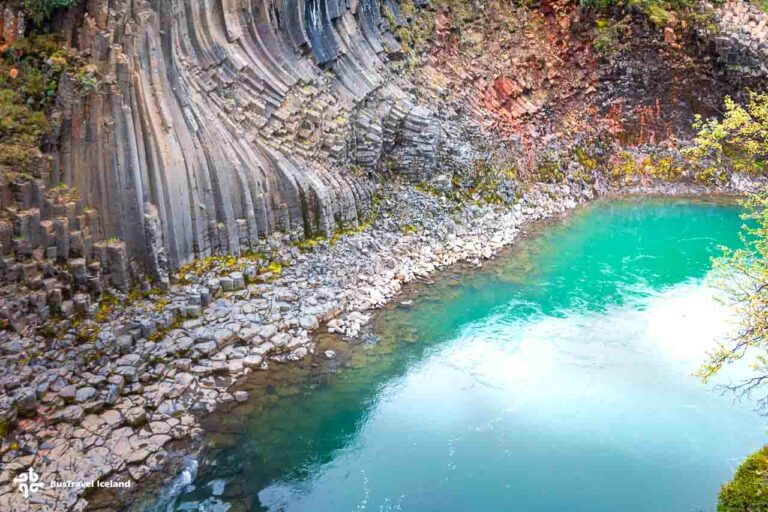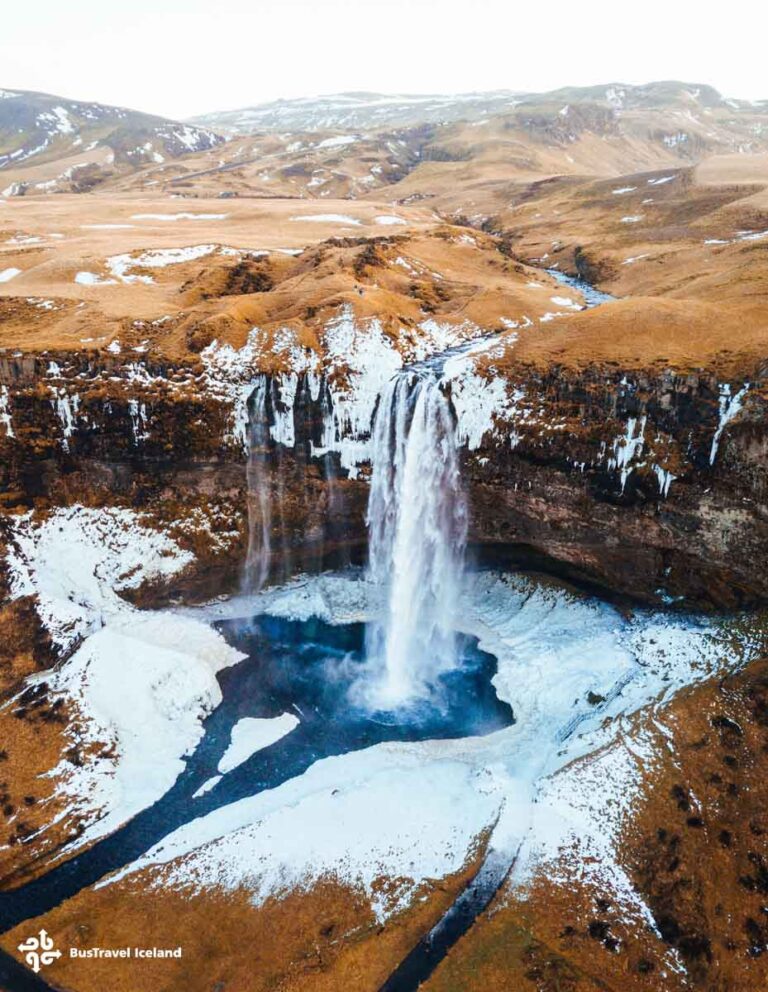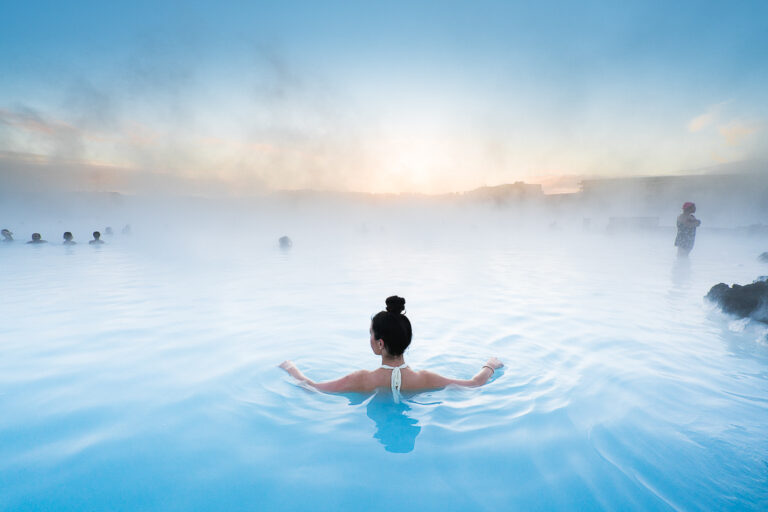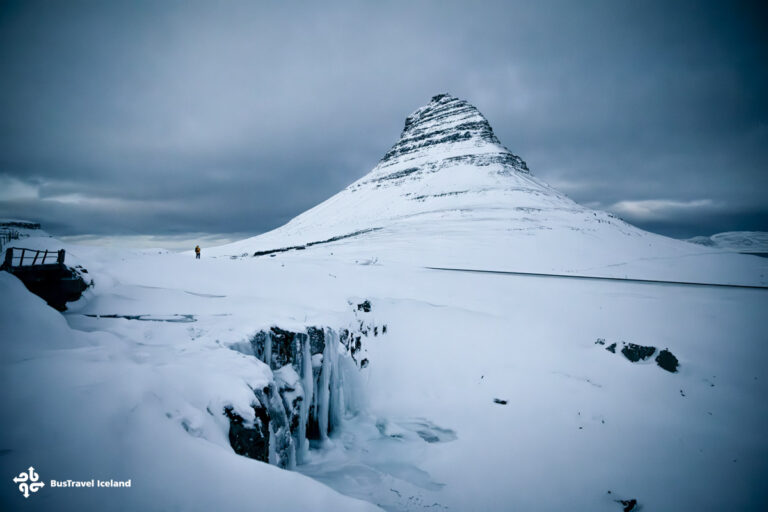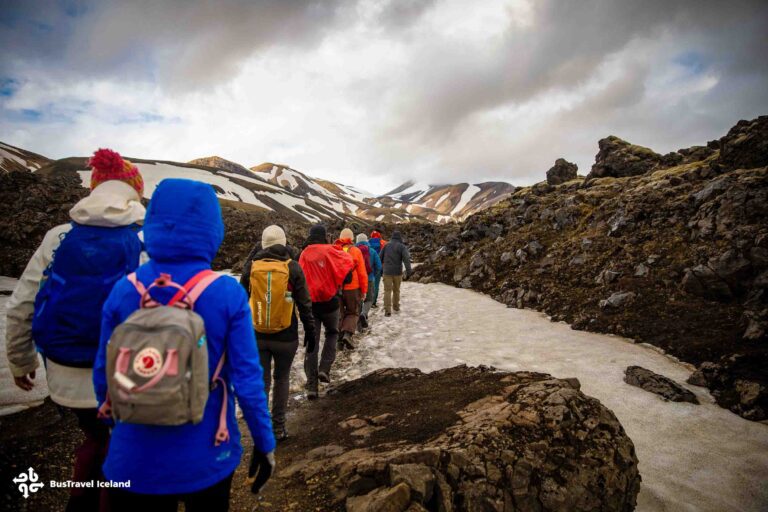Djúpivogur, A Timeless Port with Stories to Tell
- East Iceland
- 21 Mar 2025
Found in the southeastern region of Iceland, Djúpivogur is a lesser-known fishing village that embodies tranquility, a high quality of life, and a serene atmosphere. Surrounded by breathtaking landscapes, this charming coastal town is an ideal retreat for those seeking a slower pace and a deeper connection with nature.

In this post, we’ll explore the must-see sights and experiences in Djúpivogur and its neighboring towns. How far is Hofn from Djupivogur in Iceland, and other nearby towns? The best time to visit, and more.
Located between rugged fjords and sweeping coastlines, Djúpivogur is a tranquil fishing village of around 500 residents along Iceland’s Ring Road. Surrounded by breathtaking landscapes—towering Búlandstindur, black sand beaches, and Vatnajökull National Park—it offers a slow-paced, authentic Icelandic experience.
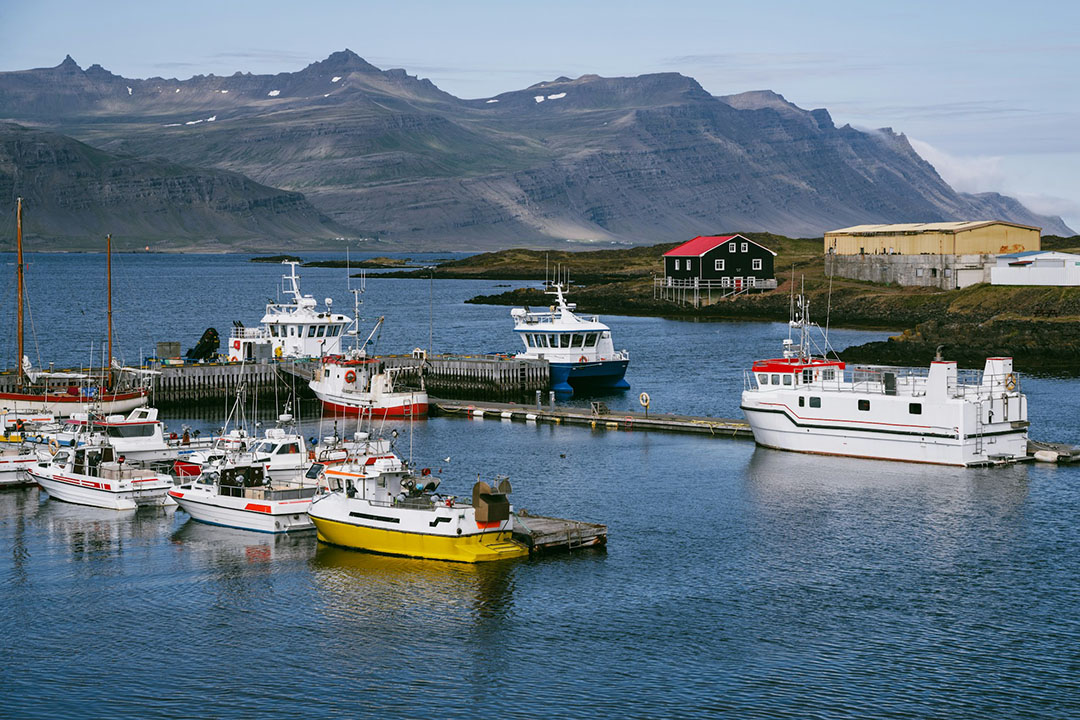
Where is Djupivogur in Iceland
A small, picturesque fishing village, Djúpivogur is located on the eastern coast of Iceland, nestled in Berufjörður, one of the scenic fjords along the coastline. It sits along Route 1 (the Ring Road), approximately 270 km (168 miles) east of Höfn and about 90 km (56 miles) southwest of Egilsstaðir, the largest town in East Iceland.
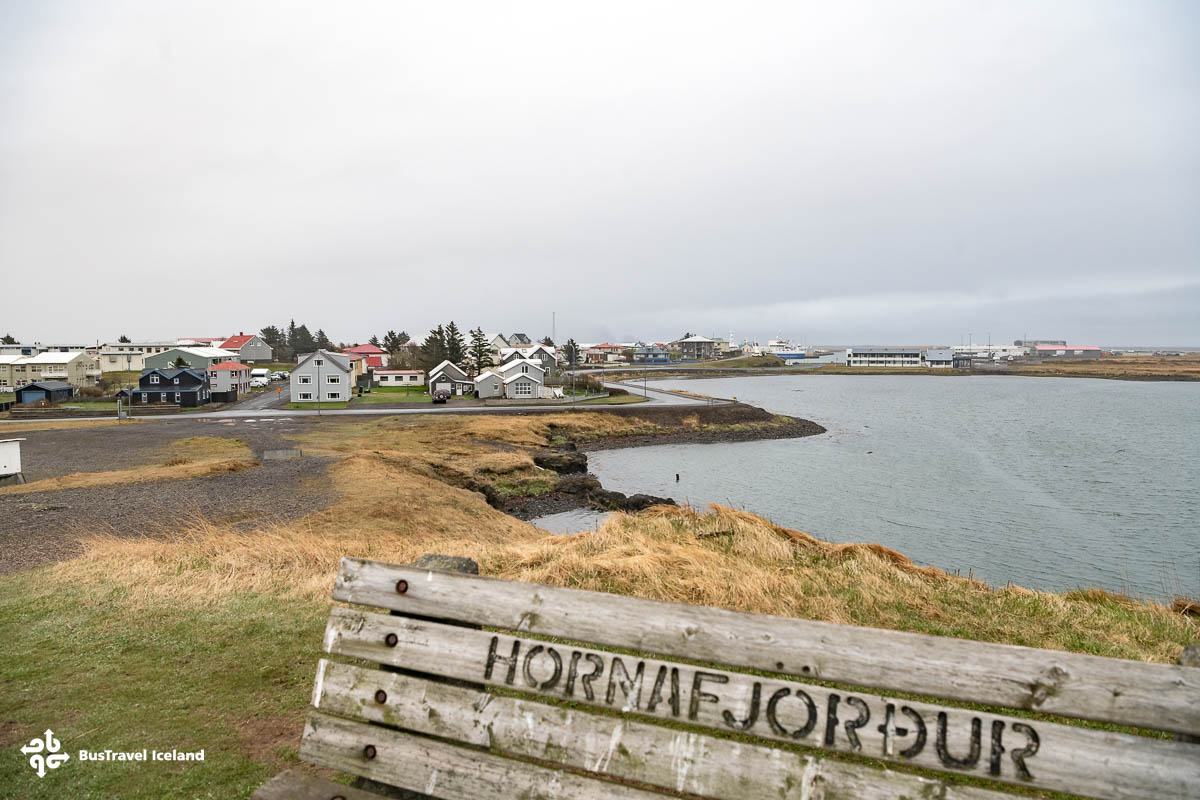
This strategic location makes it a natural stopping point for travelers exploring Iceland’s eastern fjords. The village is surrounded by stunning landscapes, including the pyramid-shaped Búlandstindur mountain, black sand beaches, and a rugged coastline. It also provides easy access to nearby attractions like Vatnajökull National Park, Stokksnes, and Hengifoss Waterfall.
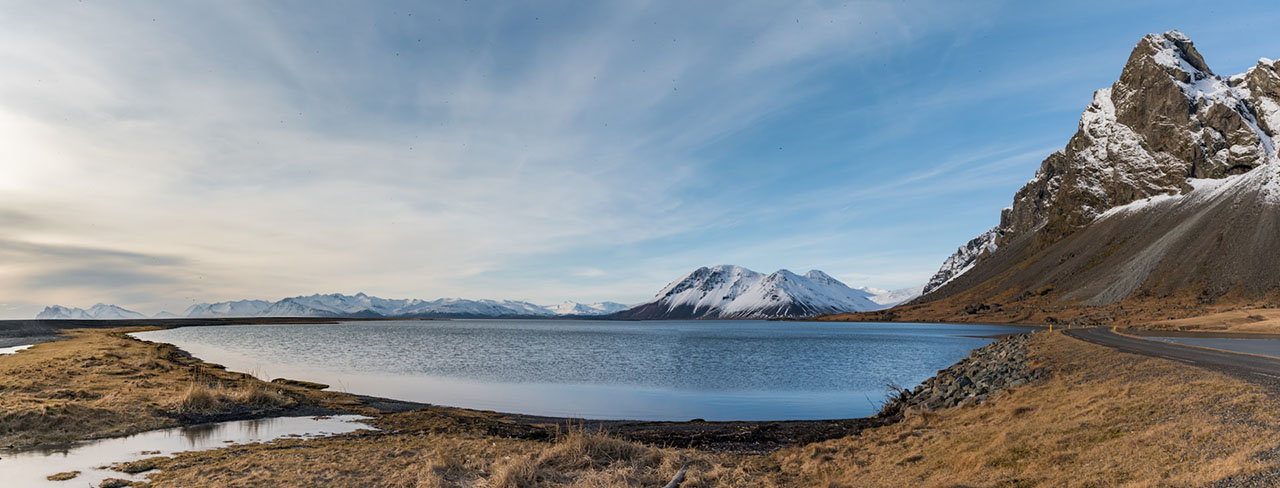
Djupivogur’s History
For over five centuries, Djúpivogur has been a gateway to the world, its harbor welcoming merchants, sailors, and explorers from distant shores. But not every visitor came in peace. In 1627, Barbary pirates from North Africa stormed Iceland’s coast, bringing terror to this quiet settlement in what remains the only recorded violent invasion in the nation’s history.
Today, Djúpivogur is a stark contrast to those turbulent times—a sanctuary of tranquility and slow living. As a proud member of the international Cittaslow movement, the village embraces a philosophy of unhurried, quality living, where nature, history, and community take center stage.
Wandering through its streets, you’ll find echoes of its past in the beautifully preserved historic buildings. The Langabúð, an 18th-century timber trading post, now serves as both a heritage museum and a cozy café, where the scent of fresh coffee mingles with stories of old maritime trade.
Djupivogur in Iceland – Things To Do
A Walk to Explore Eggin í Gleðivík – Eggs of Merry Bay
Down by the harbor, a striking art installation, Eggin í Gleðivík, showcases 34 oversized granite eggs, each representing a local bird species. This whimsical sculpture by Sigurður Guðmundsson lines the shore of Merry Bay (Gleðivík), adding an artistic touch to the village’s already scenic waterfront.
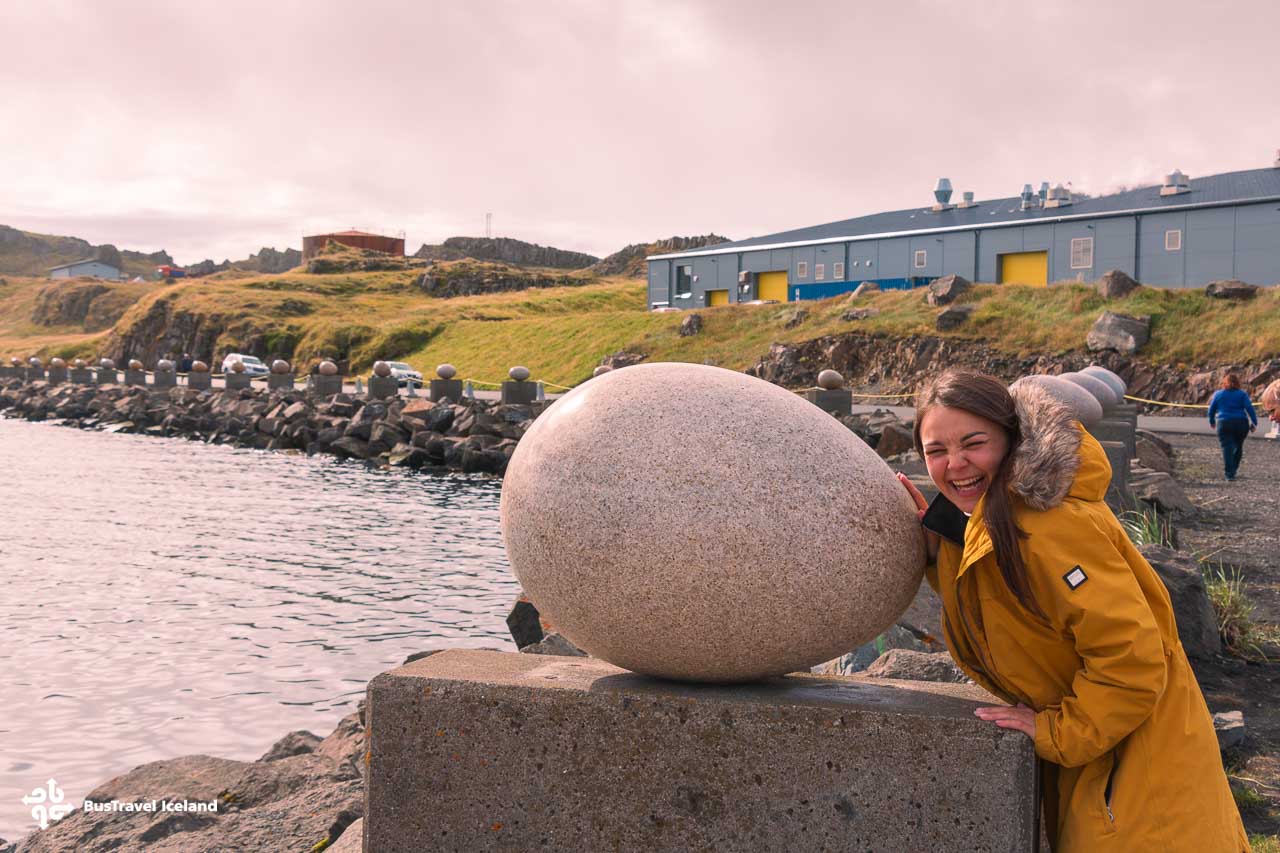
Unveiled in 2009, Eggin í Gleðivík is a striking outdoor art installation by Icelandic artist Sigurður Guðmundsson. The piece consists of 34 large granite eggs, replicas of the eggs of different bird species that nest in the Djúpivogur region. Crafted from Chinese granite and transported to Iceland, the eggs are carefully arranged along the shoreline near the town’s harbor. Their varying sizes reflect the actual proportions of the eggs they depict, creating a unique fusion of art, nature, and local wildlife.
The installation not only serves as a beautiful and surreal sight against the backdrop of mountains and sea but also carries deeper symbolic meaning. It highlights the harmony between nature and culture, paying tribute to the diverse birdlife that thrives in East Iceland.
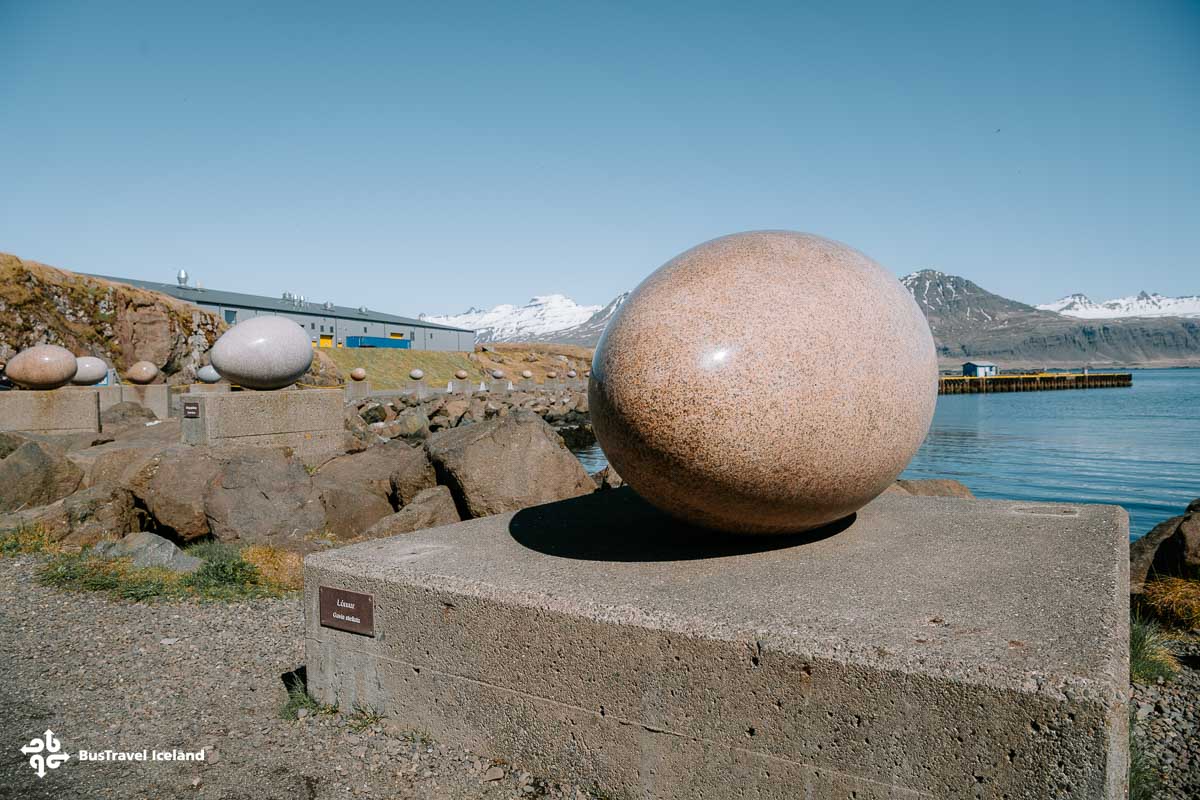
Some of the notable species represented include the puffin (Fratercula arctica), one of Iceland’s most beloved seabirds, and the Arctic tern (Sterna paradisaea), known for its remarkable long-distance migration. Other featured species include the common eider (Somateria mollissima), a sea duck famous for its down feathers, and the red-throated diver (Gavia stellata), a striking waterbird often found in Iceland’s lakes. The black-legged kittiwake (Rissa tridactyla) and the Eurasian oystercatcher (Haematopus ostralegus), with its distinctive black-and-white plumage and bright red beak, are also among the species honored in this captivating work of art.
By blending natural elements with artistic expression, Eggin í Gleðivík offers visitors both a visual and educational experience.
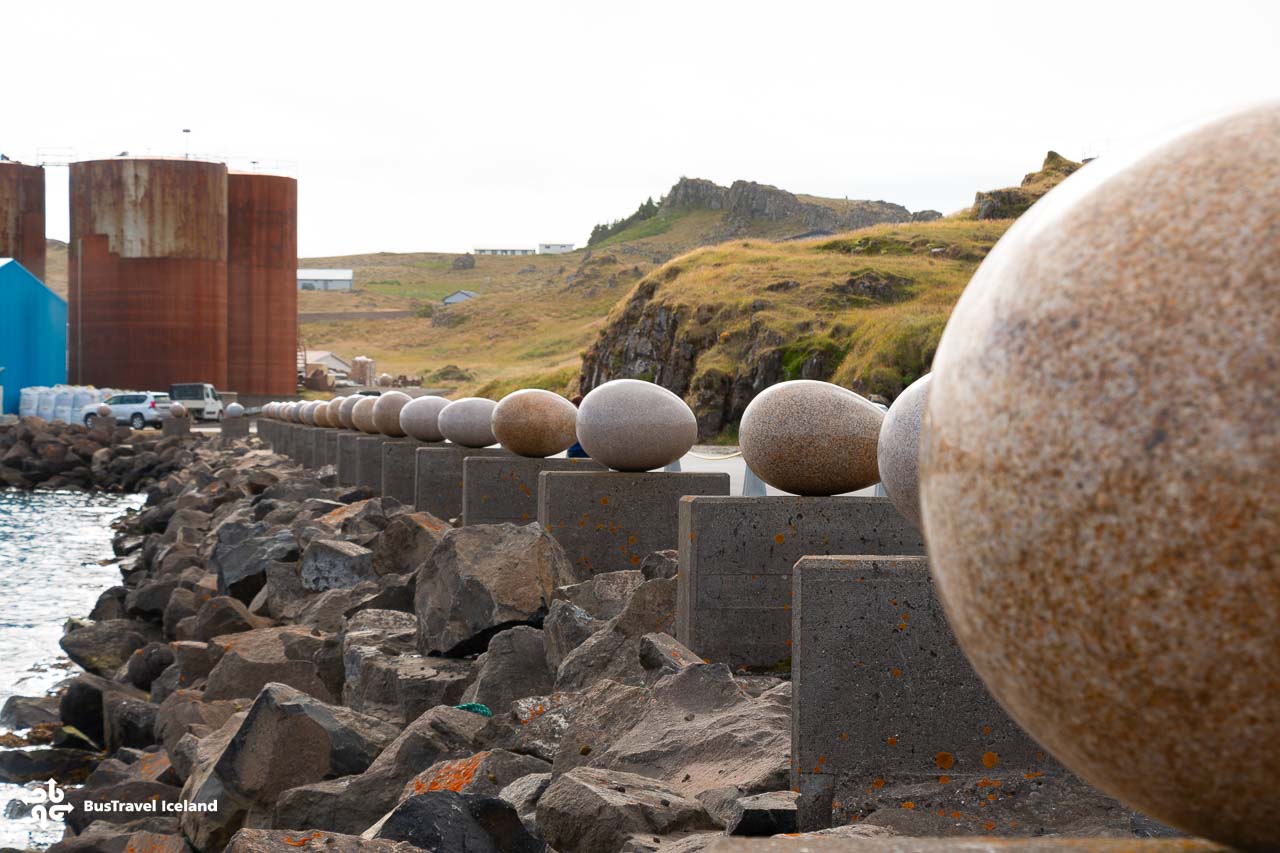
A Hike to Búlandstindur
The striking 1,069-meter pyramid-shaped mountain dominates the skyline, offering breathtaking hiking opportunities and mystical folklore. Located just outside Djúpivogur, Búlandstindur is easily accessible via Route 1, with a short detour onto local roads leading closer to the base.
Hikers can explore trails ranging from moderate to challenging, with paths offering panoramic views over Berufjörður. According to local legend, the surrounding mountain possesses mystical energy, and many believe that those who hike to the top will feel a unique sense of peace and renewal. The best time to attempt the climb is during the summer months when the weather is most favorable.
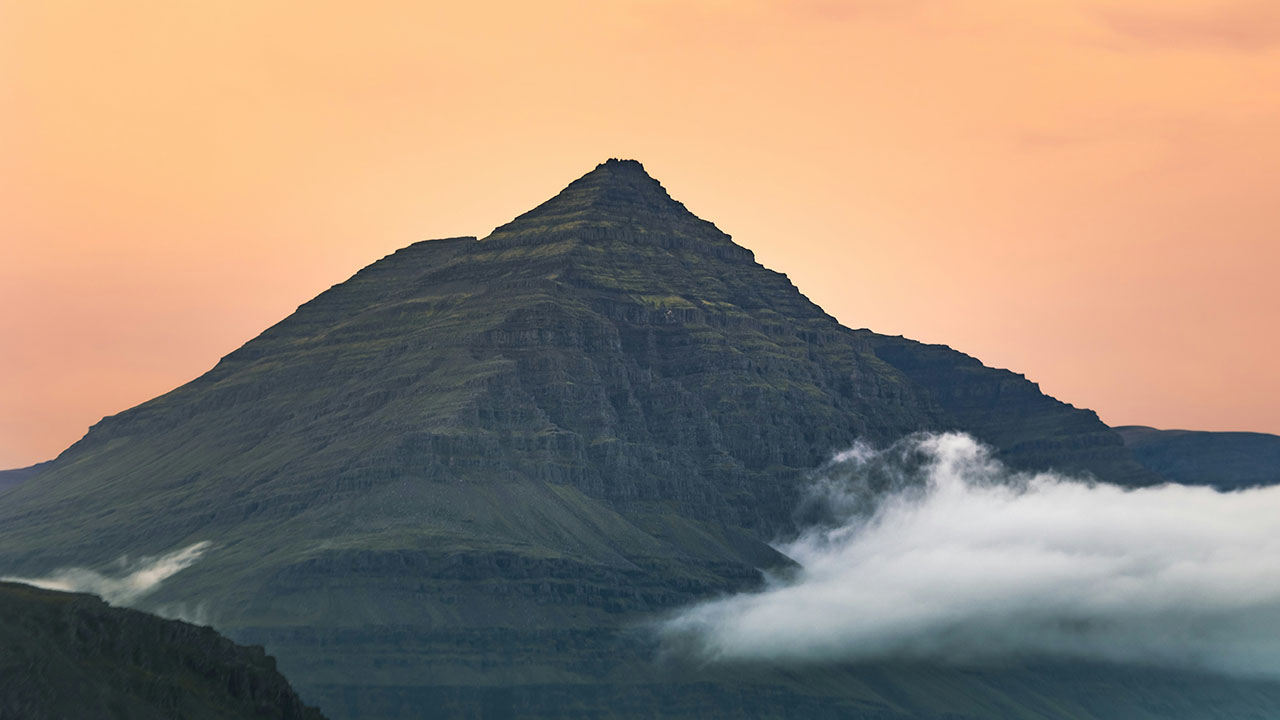
A Stroll on the Black Sand Beaches
Just a short drive from Djúpivogur, these striking beaches showcase the raw beauty of Iceland’s coastline. Formed by volcanic activity, the dark sands contrast beautifully with the roaring waves of the Atlantic Ocean. The beaches provide a dramatic backdrop for photographers and a peaceful place for a reflective walk, with opportunities to spot seabirds and unique coastal rock formations.
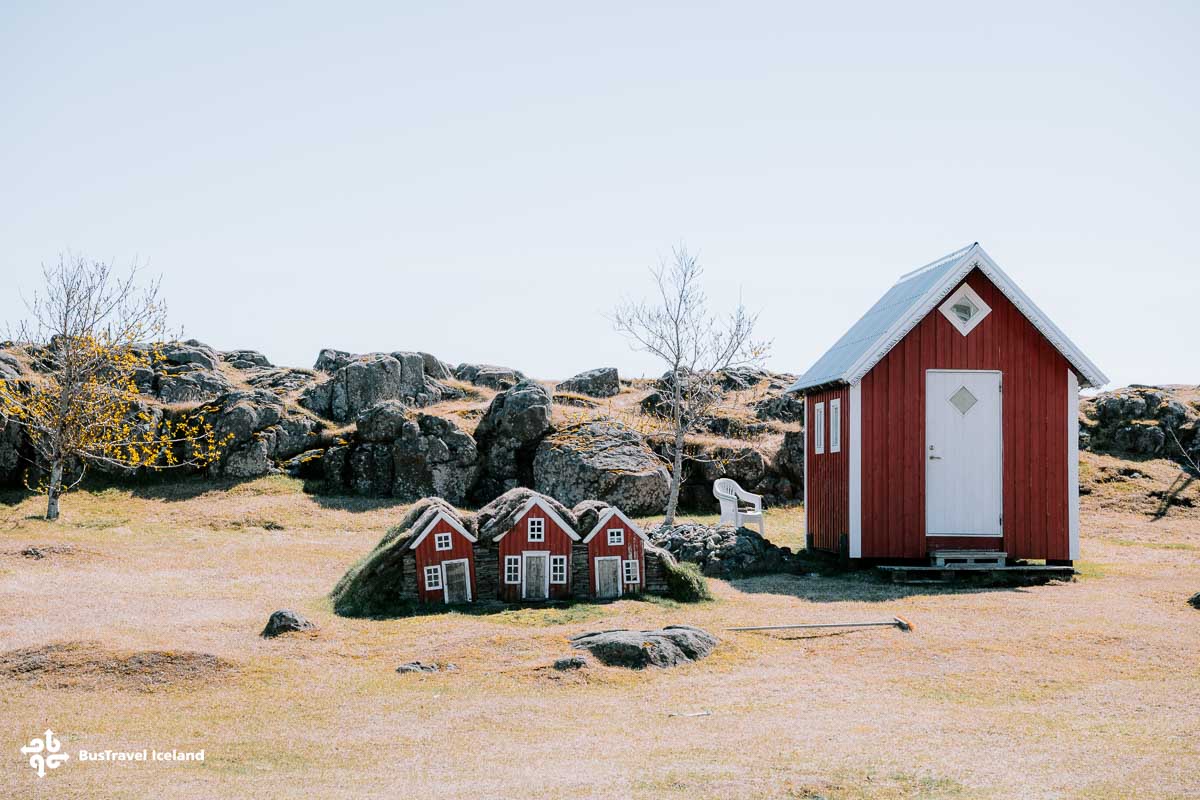
Adventures in Vatnajokull National Park
For those traveling from Djúpivogur, Vatnajökull National Park offers an extraordinary opportunity to experience Iceland’s largest and most diverse protected area. Located about a two-hour drive away via Route 1, the journey itself is breathtaking, winding past dramatic coastlines and vast highland scenery.

The park is home to Europe’s largest glacier, Vatnajökull, which blankets a vast expanse of mountains and valleys. Popular stops include Jökulsárlón Glacier Lagoon, where shimmering icebergs drift across the water, and Svartifoss, a stunning waterfall framed by dark basalt columns.

Hiking trails weave through glacial landscapes, lava fields, and lush green valleys, offering something for every level of explorer. Whether you’re ice climbing, taking a boat tour among icebergs, or simply marveling at the raw power of nature, Vatnajökull National Park is an unforgettable excursion from Djúpivogur.
Boat Trips to Papey Island
During the summer months, visitors can embark on a boat tour to Papey Island, a small, uninhabited island located just off the coast of Djúpivogur.
Once home to a small community until the early 20th century, the island is now known for its abundant seabird colonies, including thousands of nesting puffins. The boat ride offers a chance to see seals basking on the rocky shores and enjoy breathtaking views of the East Icelandic coastline.
On the island, you can explore a historic wooden church—the oldest of its kind in Iceland—along with ruins of old settlements that provide insight into the island’s past. The trip is perfect for nature lovers and history enthusiasts looking for a peaceful, off-the-beaten-path experience.
Local Culture & Cuisine
Nature is never far in Djúpivogur. The Eastfjords are home to Iceland’s only wild reindeer population, and if you’re lucky, you might spot these majestic creatures grazing in the hills.
For those drawn to the unusual, the Bones, Sticks, and Stones Gallery is a must-see—a sculpture garden filled with whalebones and other curious finds from the sea. But perhaps the most remarkable story of all is that of Hans Jónatan, Iceland’s first known Black citizen. Born into slavery in the Danish Caribbean, he escaped to Djúpivogur in the 19th century, where he was embraced by the community. Today, more than 900 Icelanders can trace their lineage back to him.
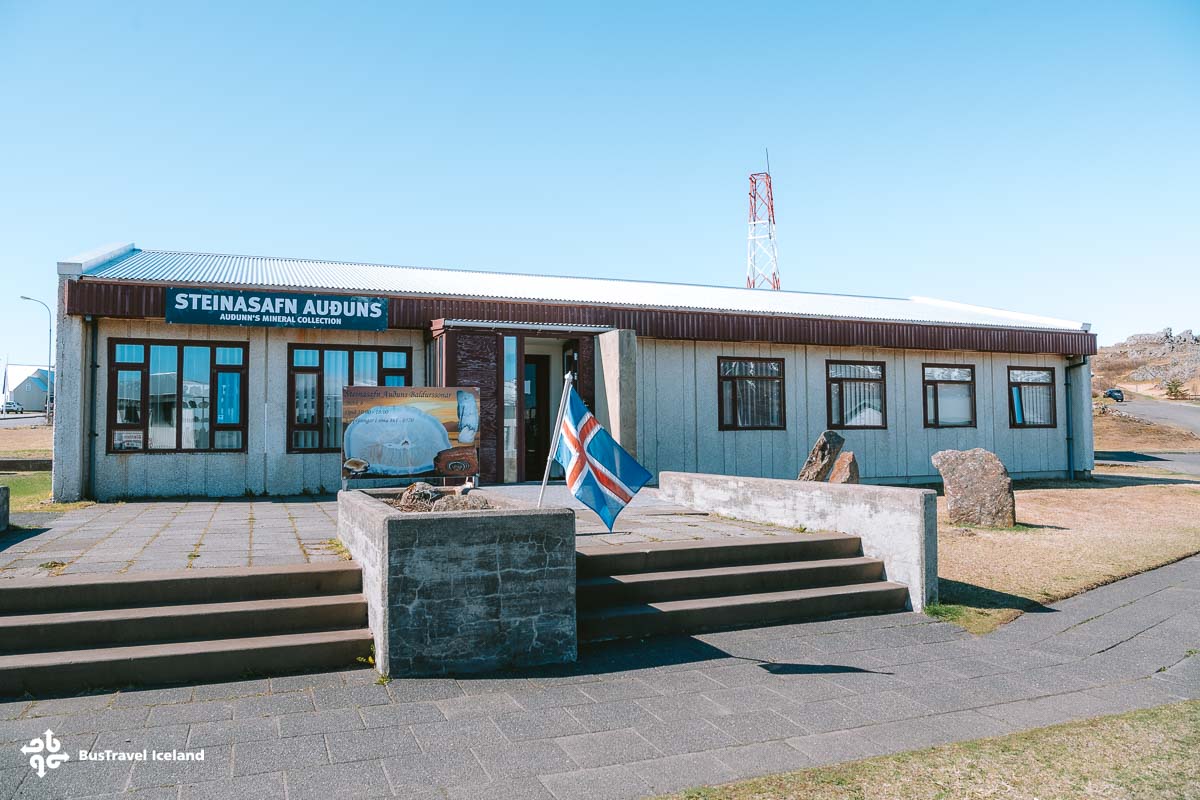
And, of course, no visit to Djúpivogur in South East Iceland would be complete without indulging in its fresh seafood. Whether it’s the catch of the day at Hótel Framtíð’s renowned restaurant or a cozy meal at Hafið Bistro, with its hearty burgers, homemade cakes, and sweeping harbor views, the village serves up a taste of East Iceland’s rich culinary heritage.
Djúpivogur is known for its Slow Travel philosophy, encouraging visitors to immerse themselves in the local culture. Visit the Langabúð cultural center, Iceland’s oldest commercial building, which houses exhibitions, a café, and a small museum. Enjoy fresh seafood dishes at a local restaurant, especially langoustine and fish stew, both East Icelandic specialties.
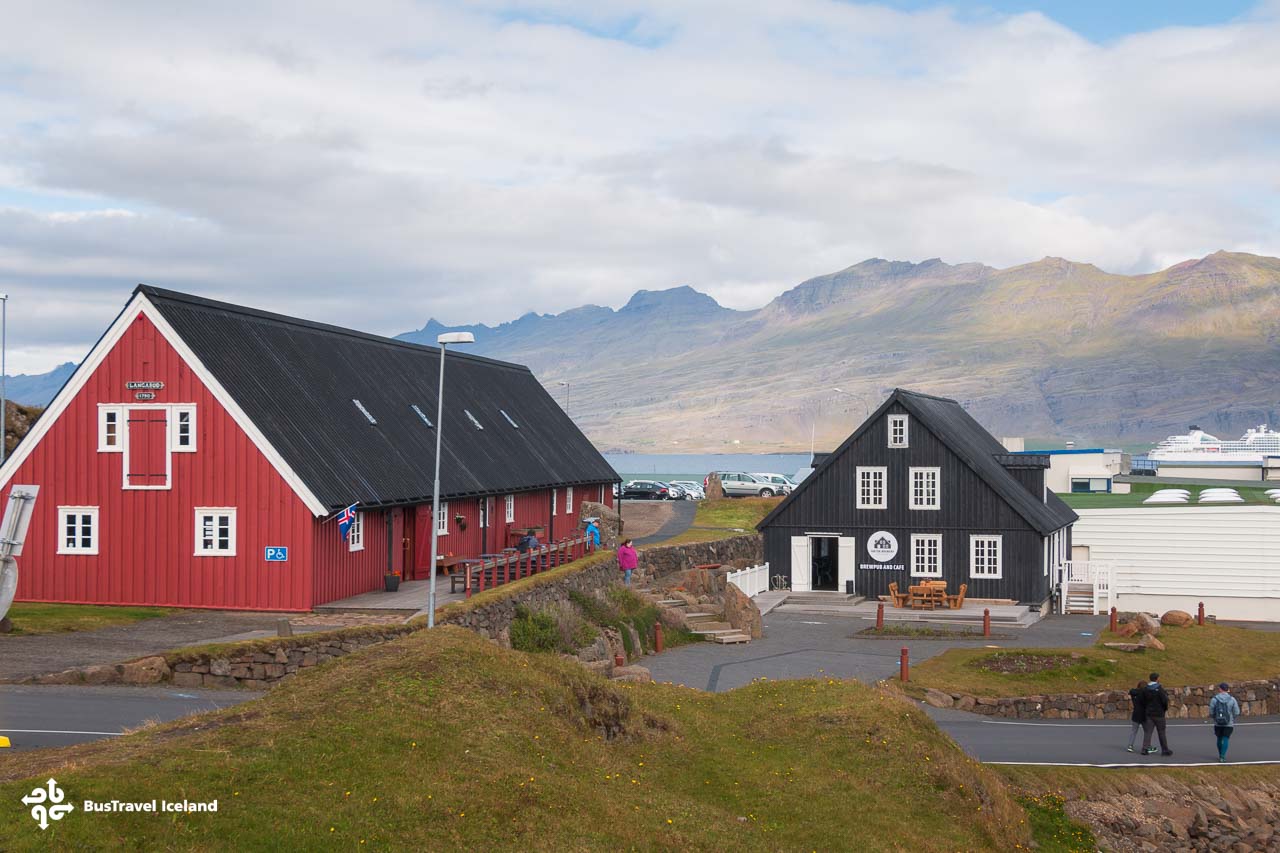
Djúpivogur is Iceland’s only Cittaslow town, embracing a global movement that promotes a slower, more mindful way of life. Focused on quality over speed, it encourages a relaxed pace in daily living, urban spaces, and local culture.
When you are there, it’s time for you to slow down, breathe deeply, and soak in the rhythms of a coastal life that has endured for centuries.

Getting There & Best Time to Visit
Djúpivogur is easily accessible via the Ring Road (Route 1) and is about a six-hour drive from Reykjavik. The best time to visit is during the summer months (June to August) when the weather is mild, and daylight is extended, allowing for optimal sightseeing and outdoor activities.
Djúpivogur experiences a cool maritime climate with mild summers and chilly winters, influenced by its coastal location.
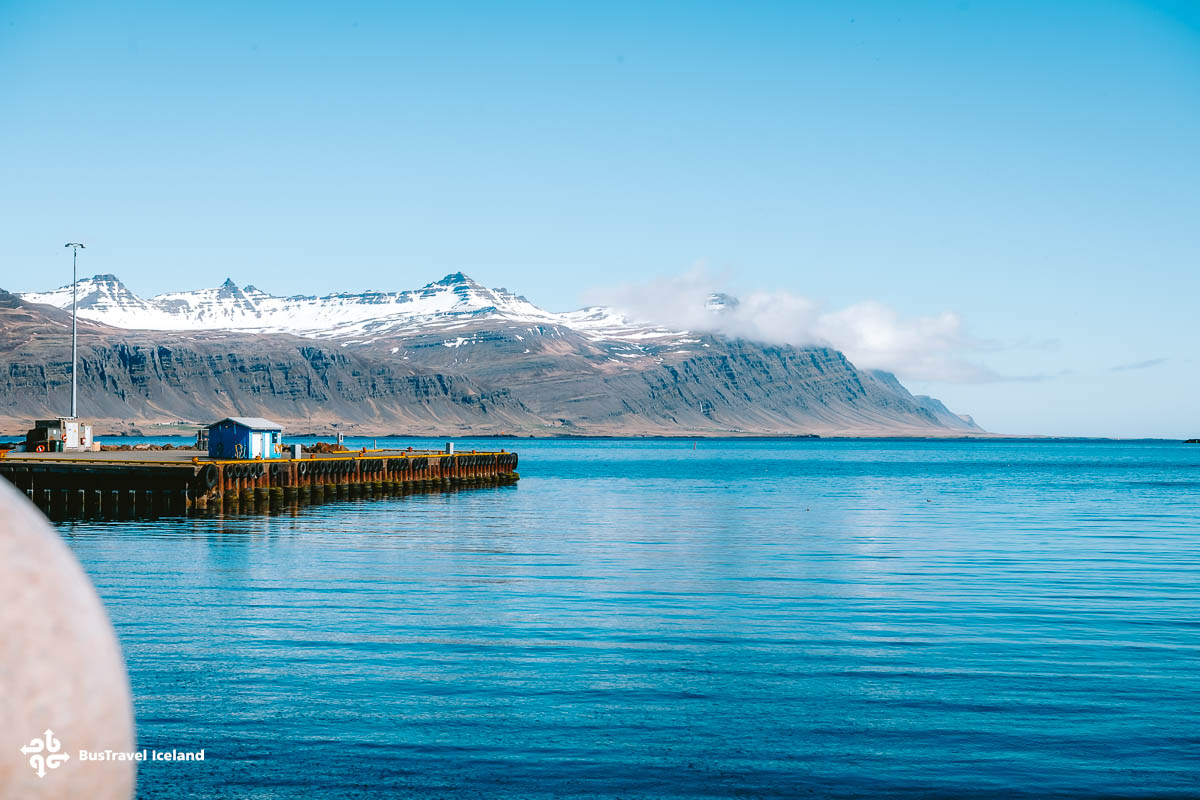
From June to August, temperatures average between 8–14°C (46–57°F), with long daylight hours making it the best time for outdoor activities. Spring (April–May) and autumn (September–October) bring cooler temperatures ranging from 3–10°C (37–50°F), with occasional rain and wind. Winters (November–March) are cold but relatively mild compared to inland Iceland, with temperatures typically between -2 to 4°C (28–39°F).
Snowfall occurs but is often light, and strong coastal winds can make it feel colder. While Djúpivogur rarely experiences extreme weather, visitors should always be prepared for sudden changes, as Icelandic weather can shift quickly regardless of the season.
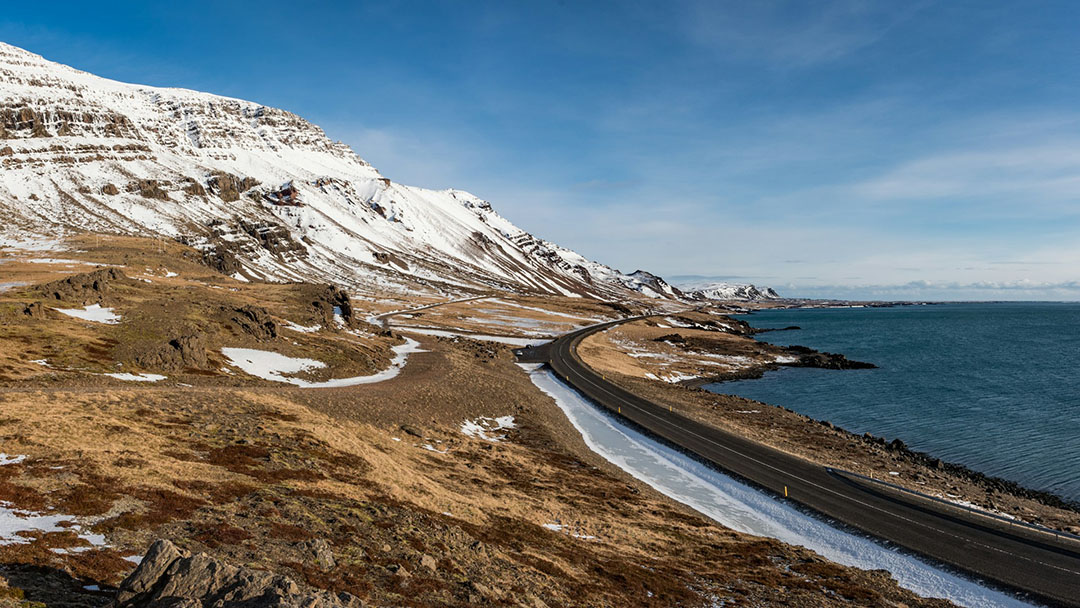
Nearby Attractions
Djúpivogur village is surrounded by stunning attractions that make for excellent day trips. Just an hour and 20 minutes south along Route 1, you can visit Stokksnes and Vestrahorn, a breathtaking coastal area known for its dramatic mountain range and black sand beaches. This location is a paradise for photographers, offering a striking contrast between the rugged peaks and the wild North Atlantic shoreline.

To the north, about a two-hour drive along Route 1 and Route 931, lies Hengifoss Waterfall, one of Iceland’s tallest waterfalls. The striking cascade, framed by colorful basalt layers, is well worth the scenic drive. Nearby, Hallormsstaðaskógur, Iceland’s largest forest, offers peaceful nature walks and hiking trails along the shores of Lake Lagarfljót. Both sites are accessible via Egilsstaðir, the largest town in East Iceland, making them ideal stops for those venturing further into the region.
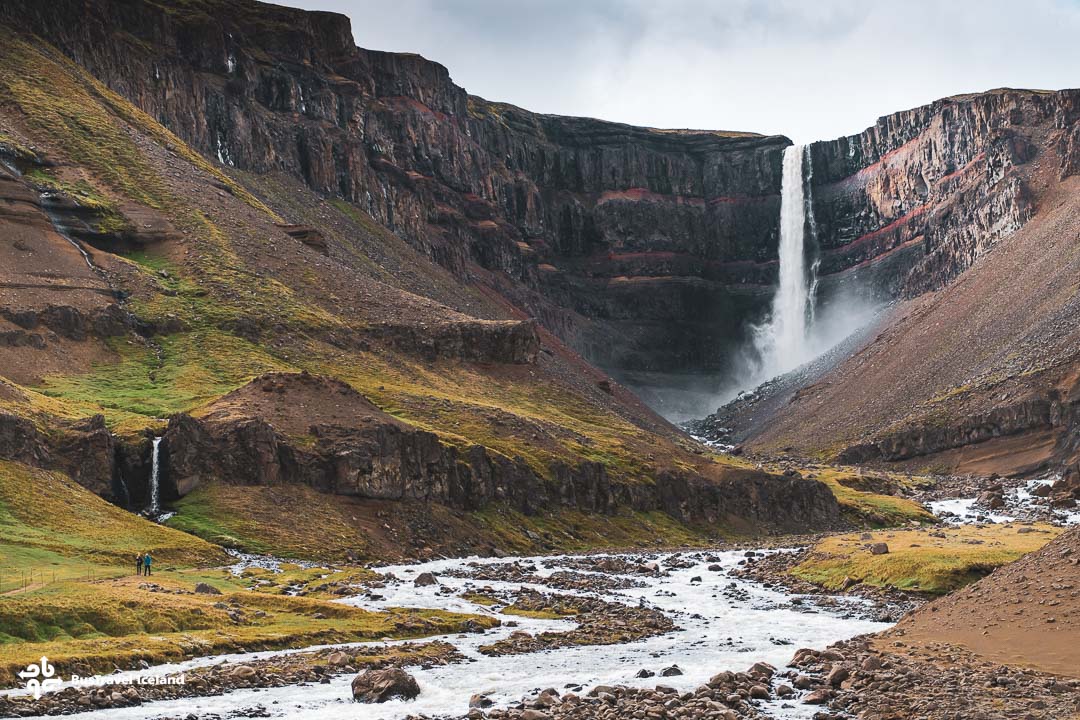
For those seeking relaxation, Vök Baths, located just outside Egilsstaðir along Route 925, provide a unique geothermal spa experience. Vök‘s floating infinity pools sit in the serene waters of Lake Urriðavatn, offering naturally warm, mineral-rich waters and breathtaking views of the surrounding landscape. The combination of hot and cold pools makes for a rejuvenating stop on any road trip.

For a taste of culture and coastal charm, travelers can drive about two hours north on Route 1 and Route 93 to Seyðisfjörður, a picturesque fjord town known for its colorful houses, art scene, and cozy cafés. The journey includes a dramatic mountain pass, often shrouded in mist, adding to the enchanting atmosphere of this remote village.
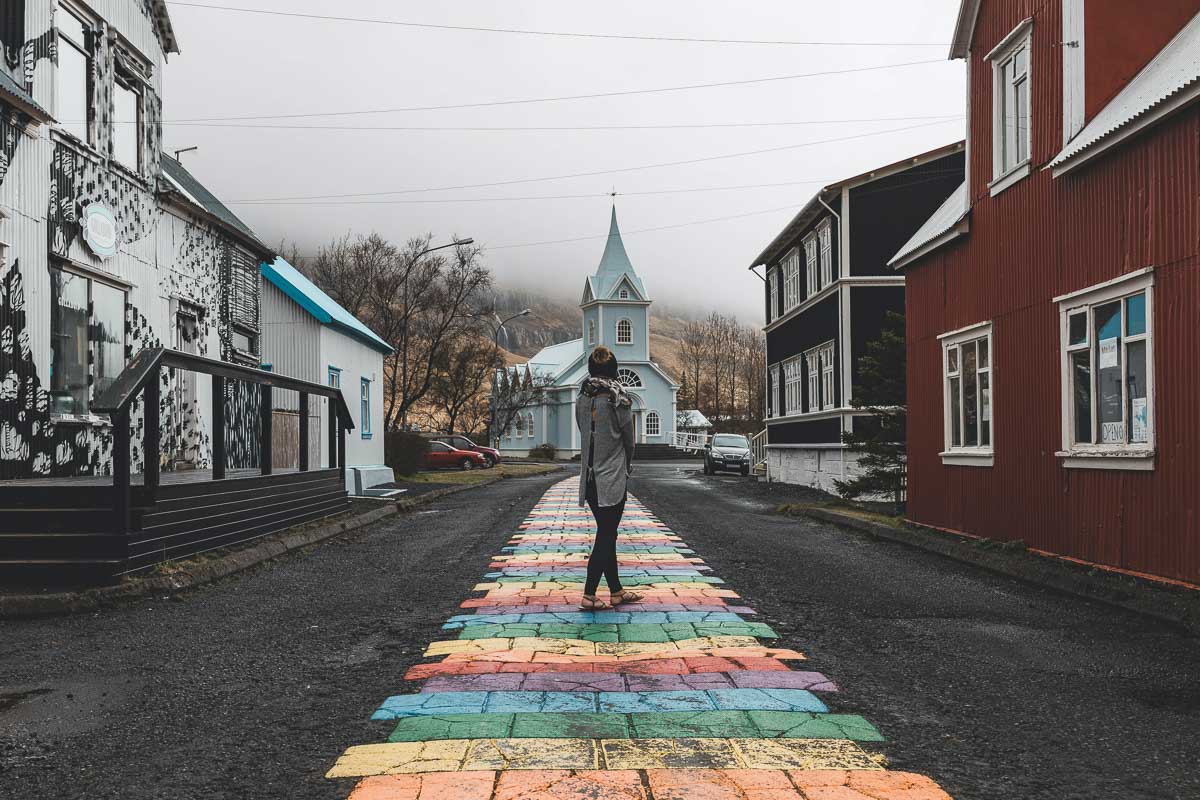
Further northeast, about three hours from Djúpivogur via Route 1 and Route 94, lies Borgarfjörður Eystri, a hidden gem renowned for its spectacular hiking trails and rich birdlife. The area is home to one of Iceland’s best puffin-watching spots, where visitors can see these charming seabirds up close from mid-April to mid-August. The village of Bakkagerði, the heart of Borgarfjörður Eystri, is also steeped in folklore, believed to be home to Iceland’s “hidden people” (elves).
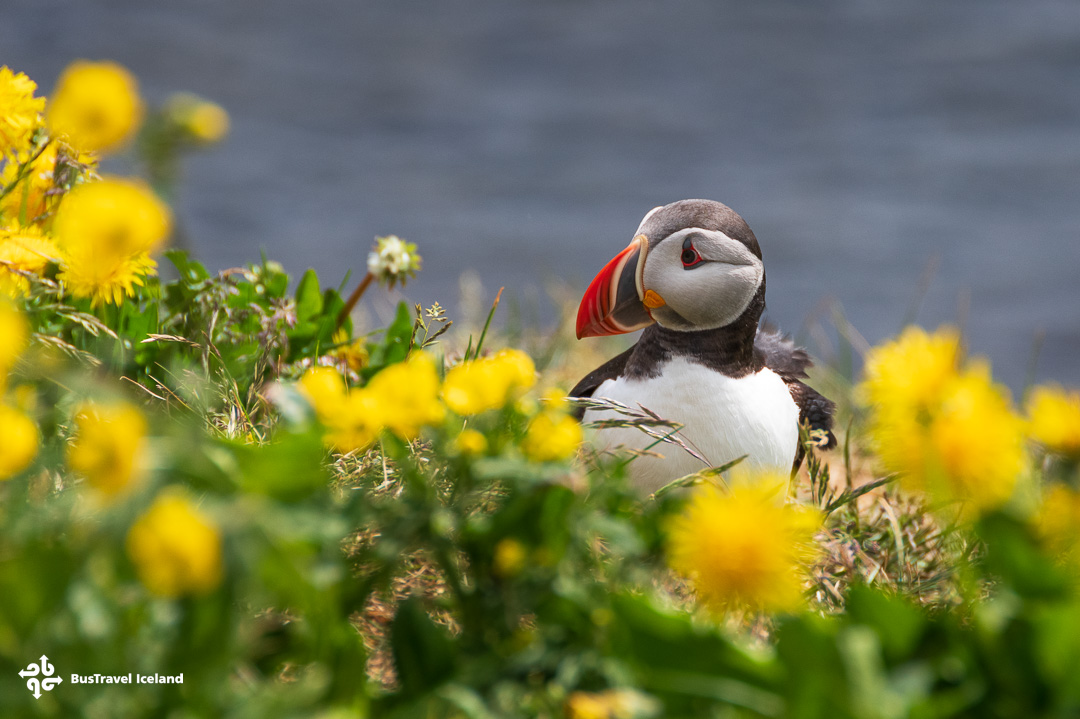
Finally, nature lovers and folklore enthusiasts can explore Lagarfljót, a glacial lake just under two hours from Djúpivogur, rumored to be home to the legendary Lagarfljót Worm. Whether taking a boat tour or enjoying the lake’s scenic surroundings, this stop offers a perfect blend of natural beauty and Icelandic legend.
With so many incredible destinations within a short drive, Djúpivogur serves as an excellent base for discovering the diverse landscapes, cultural treasures, and relaxing retreats of East Iceland.
